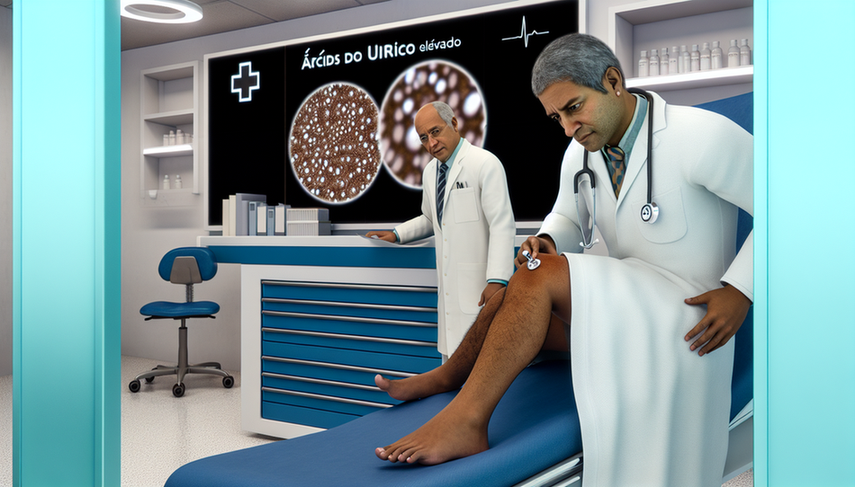Gout Diagnosis: Elevated Uric Acid, Monosodium Urate Crystals, and Metatarsophalangeal Joint Aspiration

Dear colleagues, gout is one of the most common forms of inflammatory arthritis, characterized by the deposition of monosodium urate crystals in the joints and tissues. This disorder is frequently associated with elevated levels of uric acid in the blood, a condition known as hyperuricemia. Accurate identification of gout is crucial for its proper management, and in this context, arthrocentesis plays a fundamental role.
Diving Deeper into Gout Diagnosis
The diagnosis of gout is based on a combination of clinical findings, uric acid levels, and, crucially, the identification of urate crystals in the synovial fluid. Arthrocentesis, or joint aspiration, is the standard procedure to obtain this fluid and confirm the presence of crystals under the microscope. This method remains the gold standard for gout diagnosis [1].
In addition to arthrocentesis, imaging techniques such as dual-energy computed tomography (DECT) have proven useful for visualizing urate deposits in the joints, even before clinical symptoms present [2]. This non-invasive technique can complement the diagnosis in cases where arthrocentesis is not feasible.
Gout often initially manifests as acute monoarthritis, frequently in the metatarsophalangeal joint of the big toe. The presence of tophi, which are subcutaneous deposits of urate crystals, can also be indicative of chronic gout [3].
Conclusions
Accurate diagnosis of gout is essential for effective treatment. Arthrocentesis remains an invaluable tool for confirming the presence of monosodium urate crystals in the synovial fluid. However, advanced imaging techniques like DECT offer valuable complementary information, especially in complex cases. Early identification and proper management of hyperuricemia can prevent long-term complications and improve patients' quality of life.
Referencias
- [1] Current trends in crystal identification
- [2] Dual-Energy Computed Tomography of the Knee, Ankle, and Foot: Noninvasive Diagnosis of Gout and Quantification of Monosodium Urate in Tendons and Ligaments
- [3] Gout: Rapid Evidence Review
Created 5/1/2025
